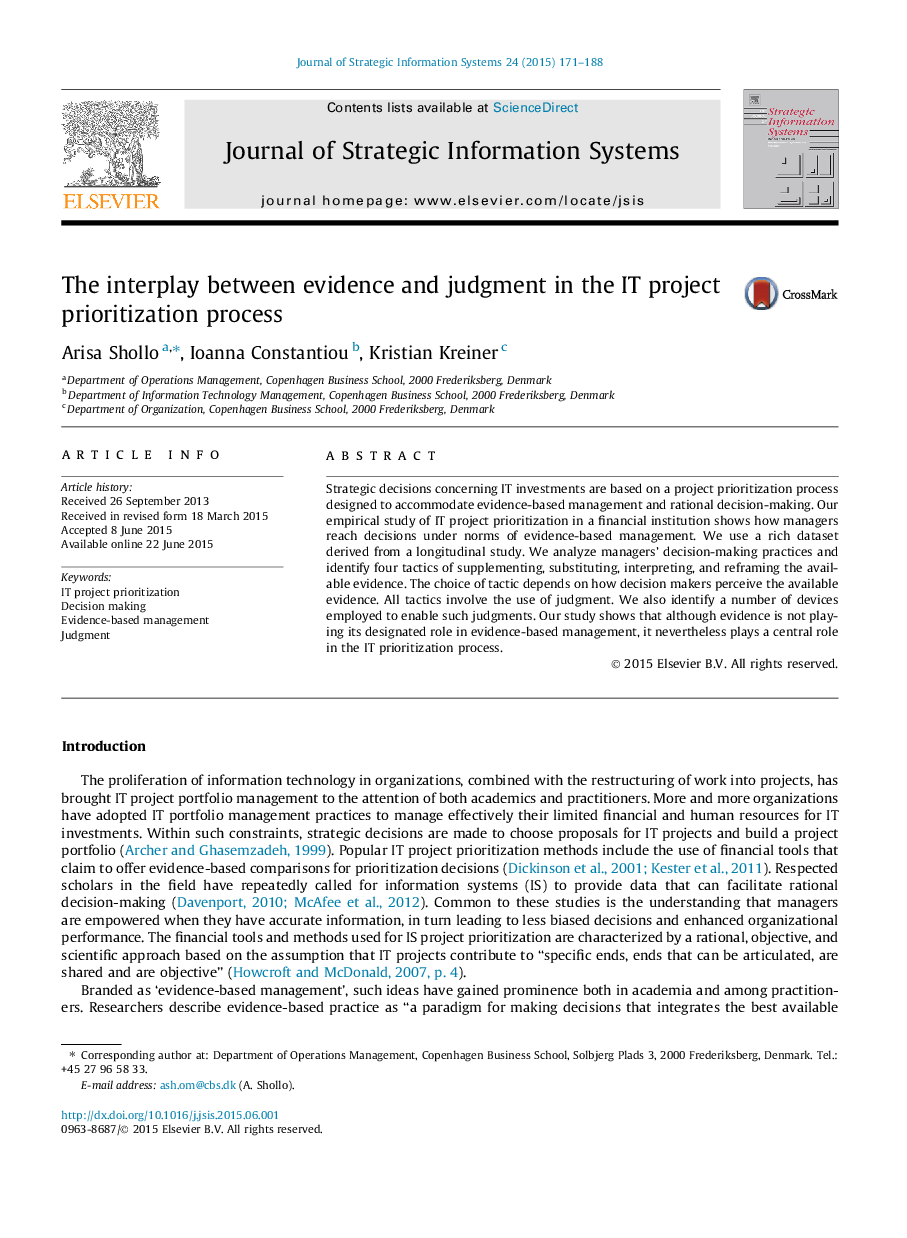| کد مقاله | کد نشریه | سال انتشار | مقاله انگلیسی | نسخه تمام متن |
|---|---|---|---|---|
| 555626 | 1451434 | 2015 | 18 صفحه PDF | دانلود رایگان |
• The IT project prioritization process is a complex and laborious task.
• Managers reach a decision via the interplay between evidence and judgment devices.
• The interplay is manifested in four tactics employed by managers.
• Those are supplementing, substituting, interpreting and reframing evidence with judgment.
• The choice of tactic depends on how decision makers perceive the available evidence.
Strategic decisions concerning IT investments are based on a project prioritization process designed to accommodate evidence-based management and rational decision-making. Our empirical study of IT project prioritization in a financial institution shows how managers reach decisions under norms of evidence-based management. We use a rich dataset derived from a longitudinal study. We analyze managers’ decision-making practices and identify four tactics of supplementing, substituting, interpreting, and reframing the available evidence. The choice of tactic depends on how decision makers perceive the available evidence. All tactics involve the use of judgment. We also identify a number of devices employed to enable such judgments. Our study shows that although evidence is not playing its designated role in evidence-based management, it nevertheless plays a central role in the IT prioritization process.
Journal: The Journal of Strategic Information Systems - Volume 24, Issue 3, September 2015, Pages 171–188
